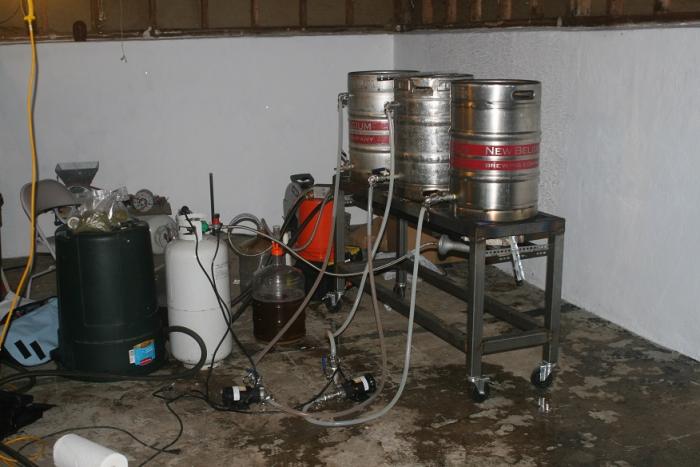qtd3612
Active Member
I brewed my first 10 gallon on my new stand and coolers set up.
had a issue with the chugger pump.
All grain, new stand, well brewed my 1st time using the10 gallon coolers , chugger pump and kettle from your store,
Everything went very well with a few minor details that I need some help on.
I have a copper line ( used shark bite fitting and some pex tubing ) to run from the kettle down to the chugger and then up to either the mash or the hlt.
The attached pdf shows the set up.
I opended the valve to from the kettle above the pump then opened the valve (the drain to primp the pump then closed that valuve and turn pump on.
Then opend the value going to the mash tun. This worked great no issue ( I think cant remember) then when it came to sparge and we pumped water to the Hlt a few feet higher the pump would
run good pressure but drop off and I would have to close that valve and then open the drain one again close it and open hlt again and the pressure would be back up.
Any thought as to what could cause this. I assume the pump is strong enough to pump up that high.
Do I need to not open the valve to the hlt as open so to restrict it some? Or do you think I am getting air in the line?
Thoughts or point me in the right direction.
thanks,
:rockin:
View attachment all grain stand issues 2.pdf
had a issue with the chugger pump.
All grain, new stand, well brewed my 1st time using the10 gallon coolers , chugger pump and kettle from your store,
Everything went very well with a few minor details that I need some help on.
I have a copper line ( used shark bite fitting and some pex tubing ) to run from the kettle down to the chugger and then up to either the mash or the hlt.
The attached pdf shows the set up.
I opended the valve to from the kettle above the pump then opened the valve (the drain to primp the pump then closed that valuve and turn pump on.
Then opend the value going to the mash tun. This worked great no issue ( I think cant remember) then when it came to sparge and we pumped water to the Hlt a few feet higher the pump would
run good pressure but drop off and I would have to close that valve and then open the drain one again close it and open hlt again and the pressure would be back up.
Any thought as to what could cause this. I assume the pump is strong enough to pump up that high.
Do I need to not open the valve to the hlt as open so to restrict it some? Or do you think I am getting air in the line?
Thoughts or point me in the right direction.
thanks,
:rockin:
View attachment all grain stand issues 2.pdf



